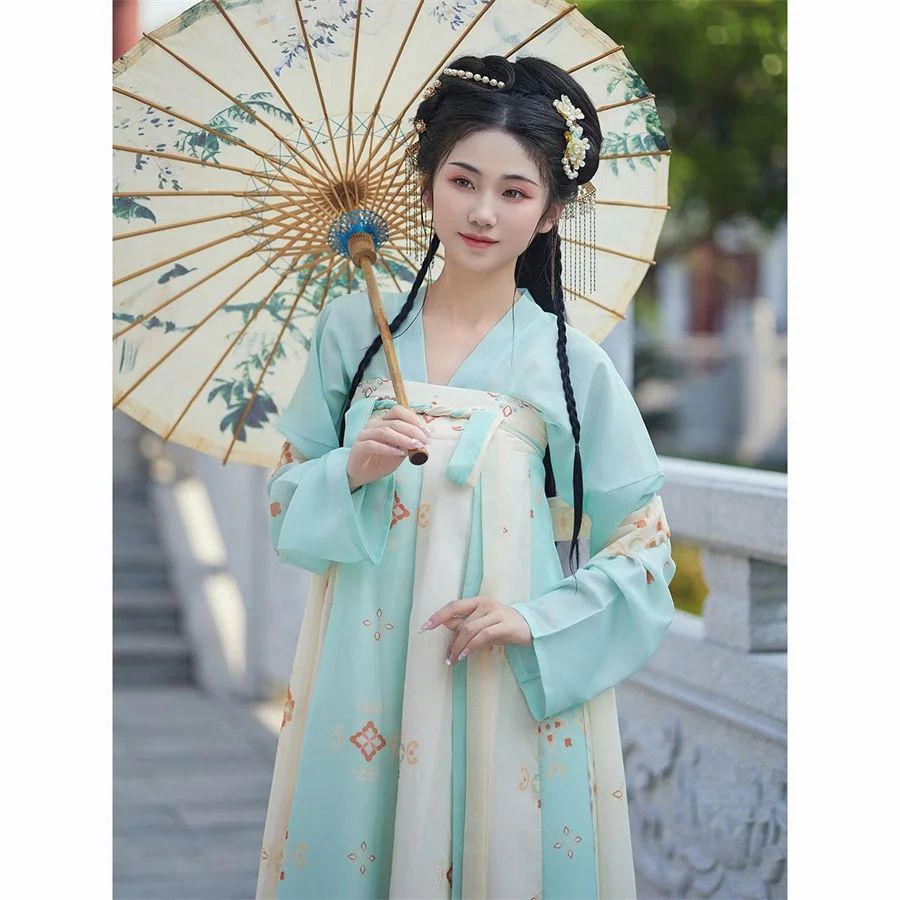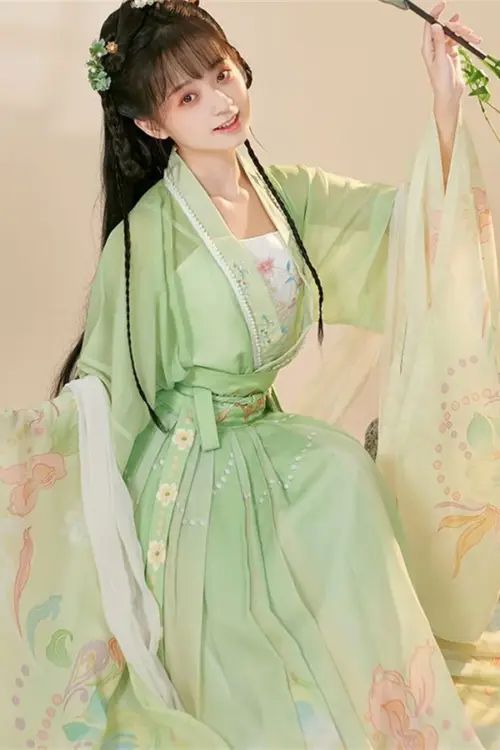Styles of 唐汉夫: A Comprehensive Guide
Tang Hanfu, the traditional clothing of the Tang Dynasty (618-907 CE), is renowned for its elegance, sophistication, and cultural significance. For those new to the world of Hanfu, understanding the various styles, fabrics, and accessories can be daunting. This guide aims to provide a comprehensive overview to help you navigate the intricacies of Tang Hanfu.

Styles of Tang Hanfu
Tang Hanfu encompasses a wide range of styles, each with its own unique characteristics. The most common styles include:
- Ruqun: A two-piece ensemble consisting of a long, flowing skirt (ru) and a short, fitted jacket (qun).
- Yishang: A one-piece garment with a wide, flowing skirt and a fitted bodice.
- Shenyi: A long, loose robe with wide sleeves and a sash at the waist.
- Banbi: A short, half-sleeved jacket worn over a skirt or trousers.
- Doupou: A short, sleeveless jacket with a wide collar and long, flowing sleeves.
Fabrics of Tang Hanfu
The fabrics used in Tang Hanfu are as diverse as the styles themselves. Common materials include:
- Silk: A luxurious and breathable fabric that drapes beautifully.
- Cotton: A comfortable and durable fabric that is suitable for everyday wear.
- Linen: A lightweight and airy fabric that is perfect for summer.
- Wool: A warm and insulating fabric that is ideal for winter.
- Brocade: A richly patterned fabric that adds a touch of opulence.
Accessories of Tang Hanfu
Accessories play a vital role in completing the Tang Hanfu ensemble. Essential items include:
- Sash: A long, decorative belt that cinches the waist and adds a touch of color.
- Hairpins: Ornate hair accessories that hold the hair in place and add a feminine touch.
- Jewelry: Necklaces, earrings, and bracelets that enhance the overall look.
- Shoes: Embroidered or beaded shoes that complement the outfit.
- Fans: Handheld fans that provide a touch of elegance and practicality.
结论
Tang Hanfu is a rich and multifaceted cultural heritage that continues to inspire and captivate. By understanding the various styles, fabrics, and accessories, you can appreciate the beauty and significance of this traditional Chinese clothing. Whether you are a seasoned Hanfu enthusiast or a curious beginner, this guide provides a solid foundation for your journey into the world of Tang Hanfu.
Fabrics Used in Tang Hanfu: A Detailed Exploration
Tang Hanfu, the traditional clothing of the Tang Dynasty (618-907 CE), is renowned for its exquisite fabrics and intricate designs. Understanding the fabrics used in Tang Hanfu is crucial for appreciating its beauty and historical significance.

Silk: The Epitome of Luxury
Silk, a natural fiber derived from silkworm cocoons, was the most prized fabric in Tang China. Its lustrous sheen, soft texture, and breathability made it the preferred choice for formal attire and luxurious garments. Tang Hanfu made from silk was often adorned with intricate embroidery, brocade, and other embellishments.
Linen: A Versatile Staple
Linen, a plant-based fiber made from flax, was another common fabric used in Tang Hanfu. Its durability, breathability, and wrinkle resistance made it suitable for everyday wear. Linen garments were often dyed in natural colors such as white, beige, and blue.
Cotton: A Comfortable Alternative
Cotton, a soft and absorbent fiber, was introduced to China during the Tang Dynasty. While not as luxurious as silk, cotton was a comfortable and affordable option for casual wear. Cotton Hanfu was often used for undergarments, robes, and summer clothing.
Wool: For Warmth and Protection
Wool, a natural fiber derived from sheep, was used in Tang Hanfu for warmth and protection against the cold. Wool garments were typically worn during the winter months or in colder regions. They were often lined with silk or fur for added comfort.
Other Fabrics
In addition to the primary fabrics mentioned above, Tang Hanfu also incorporated other materials such as hemp, ramie, and bamboo fiber. These fabrics were used for specific purposes, such as workwear, religious garments, or accessories.
Fabric Selection and Social Status
The choice of fabric in Tang Hanfu was influenced by social status. Silk was reserved for the elite, while linen and cotton were worn by commoners. Wool was used by both the wealthy and the poor, depending on the season and region.
结论
The fabrics used in Tang Hanfu played a significant role in its beauty, comfort, and social significance. Silk, linen, cotton, wool, and other materials were carefully selected and combined to create garments that reflected the wearer’s status, occasion, and personal style. Understanding the fabrics used in Tang Hanfu enhances our appreciation for this exquisite and enduring form of Chinese traditional clothing.
Essential Accessories for Tang Hanfu: A Beginner’s Guide
Tang Hanfu, the traditional clothing of the Tang Dynasty (618-907 CE), is renowned for its elegance, sophistication, and cultural significance. For those new to the world of Hanfu, understanding the different styles, fabrics, and accessories is essential.

Styles
Tang Hanfu comes in various styles, each with its own unique characteristics. The most common style is the ruqun, a two-piece ensemble consisting of a long, flowing skirt (ru) and a short, fitted jacket (qun). Other popular styles include the zhiju, a one-piece dress with a high waist and wide sleeves, and the beizi, a long, loose robe worn by men.
Fabrics
Tang Hanfu is typically made from luxurious fabrics such as silk, satin, and brocade. Silk, known for its smoothness and drape, was the preferred choice for formal occasions. Satin, with its glossy finish, added a touch of opulence. Brocade, an intricate fabric woven with raised patterns, was reserved for special events.
Accessories
Accessories play a crucial role in completing the Tang Hanfu ensemble. The most important accessory is the pibo, a long, flowing scarf worn around the neck. Other essential accessories include:
- Yuedai: A belt worn around the waist to secure the ruqun.
- Xiangfu: A small, fragrant pouch worn on the belt.
- Shan: A fan used for cooling or as a fashion statement.
- Touhua: A hair ornament worn by women to secure their hairstyles.
- Jinbu: A pair of shoes with upturned toes and embroidered designs.
Choosing the Right Hanfu
When choosing a Tang Hanfu, consider the occasion, your personal style, and body type. For formal events, opt for a ruqun made from silk or brocade. For casual occasions, a zhiju or beizi made from cotton or linen may be more suitable. If you have a petite frame, choose a Hanfu with a shorter skirt and fitted jacket. If you are taller, a longer skirt and looser jacket will flatter your figure.
结论
Understanding the styles, fabrics, and accessories of Tang Hanfu is essential for creating an authentic and elegant ensemble. By carefully selecting each element, you can embrace the beauty and cultural significance of this timeless Chinese tradition.
